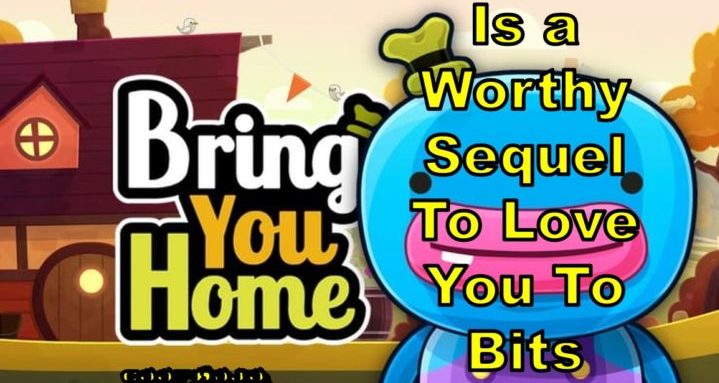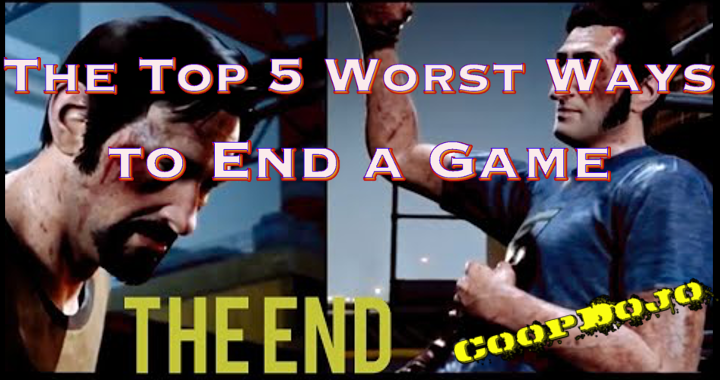
The 5 Worst Ways to End a Game
It’s been two weeks since gamers finally got a chance to try A Way Out which we think exceeds the statute of limitations on spoilers. Let’s just say it, the ending of the game is horrible. In what is otherwise a brilliant experiment in cooperative gaming and storytelling, you and a buddy spend the entirety of the game in split screen coop planning and executing a prison escape, narrowly avoiding capture by the police while checking in with family, and finally taking the adventure to somewhere in Mexico to take out the guy who led to both of your downfalls. In a final twist it’s revealed that one of you is actually and undercover cop which alone is quite stunning but the game then regresses into a basic PvP shooter as only one of you is destined to survive. It’s a silly deathmatch skirmish unlike anything in the previous 10 hours of the game and completely undermines the cooperative roots the game promises. It is brave, but just a miscalculation and particularly glaring because the rest of the game is outstanding in design and execution.
This got us thinking about other games like this, that set up a compelling experience but for some reason can’t stick the landing with a ridiculous or disappointing last act. Here now are the Top 5 Worst Ways to End a Game
5. The surprise new mechanic
The original NES Ghostbuster’s was not a great game by nearly any measure except we gave it a huge pass being fans of the film. You spent the bulk of the game racing around town to take down ghosts for profit to buy better gear building up for a final showdown with Gozer. The NES riff of Ray Parker Jr’s Who You Gonna Call is catchy enough and there’s actually a decent sense of pressure that makes the experience compelling to try; that is until you reach the final sequence which attempts to recreate a passing scene in the film about climbing dozens of flights of stairs to confront the big bad. Yes, that brief joke from the film becomes a near game-breaking moment as you literally alternate pressing A+B to step climb 80 flights of stairs all while defenseless against a constant barrage of ghosts that, if they make contact with your crew, result in your quick demise resetting the entire game. Nowhere else in the game is this A+B motion control a thing and this quickly ruins what was a somewhat decent experience (for its time!).

If only your ghostbusting crew had some means to protect themselves from that one wandering ghost. Seriously, this was a brief joke in the movie that absolutely destroys you in the game.
Same goes with more moderns games like Psychonauts, one of our favorite experiences from the original Xbox. Raz spends the majority of the game solving adventure puzzles inside the minds of others until the finale has him escaping nightmare sequence of a room filling quickly with blood requiring precision platforming to stay ahead of the rising flood (passed off by Raz’s background as an circus acrobat which has no relevance to the game until this finale). The original Half-Life proved groundbreaking ideas like immersive storytelling and continuous level design, but completely botched the finale warping you to the alien homeworld of Xen replete with frustratingly shoddy first person platforming and a vastly underwhelming final boss we defeated by jumping over and dropping remote control bomb packs into his exposed brain cavity (why not?). Hell, even the tremendous Arkham Asylum stands out as being one of the best licensed games ever and arguably the best superhero game (either that or its sequel), but left us scratching our heads as the promise of a battle of wits with the Joker in the finale got scrapped with a fist fight against a jacked-up clown prince which was completely out of character for the fabulously designed Joker until then. These are great games nearly undone by their bizarre final chapters.

“Do you even lift, Batman?” Seriously, Rocksteady, so damn close to a perfect game.
4. The no-continue challenge
We recently had a chance to check out a free play arcade in Houston to celebrate a birthday and getting our hands on games like Time Traveler, Cliffhanger, Killer Instinct, etc. for the first time in years (or longer in Cliffhanger’s case) was a treat. The arcade is nearly an extinct concept for gamers these days. One game we didn’t get a chance to play though was Rastan which is only 4 letters away from being a blatant copyright infringement of the Conan source material it’s clearly ripped from. We lost countless dollars into this game growing up playing it just about every chance we got but we never had the chance to finish it – not because we ran out of money, but that the game shuts down your option to continue in the 6th and final level. If you die there, you’re only move is to start the entire damn game over again.
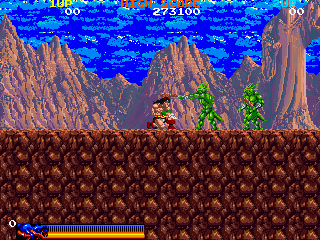
No idea how this wraps up, but we’ve seen the opening 5 levels dozens of times.
This is clearly a mechanic of the arcade days designed to get kids to invest more of their parents’ money to try to see end again. Shinboi, another combat heavy game of the same era, also shut down any option to continue in the final chapter. Bloody Roar 3 allowed gamers to take on the true final boss, Uranus, if and only if you made it through the game without losing a round but you only get one chance to win that fight. Most memorably for us was NES’s Ikari Warriors which pit you up against unbelievable odds but provided the famous ABBA code to allow infinite continues, which becomes disabled at the end of level 3 without warning. These games are challenging on their own so this final additional complication really just seems like the devs are just saying f-you for trying to make it to the end of the game instead of rewarding your perseverance.
3. The complete downer
Kratos has been through a lot in the God of War series. So much so that we’re appreciating the more laid back approach he seems to be exhibiting in the promos for the fourth game due out later this month instead of once again acting like a coked up honey badger in the midst of Keyser Soze’ing the entire world. When we last saw Kratos, he finally managed to kill Zeus along with the rest of the Greek God rogues gallery which ultimately led to a world under floods, a world cast in darkness, and imminent destruction. Yes, Kratos took his rage out inevitably against the world itself; awesome.

You either die a hero, or destroy the entire damned earth.
We’re clearly loving the new Far Cry game but we have to remember back to Far Cry 2 which inevitably leads to you killing your buddies for double crossing you and allowing you to decide to kill yourself or waiting to do it at a later time. Fallout 3’s original ending forced you to radiate yourself to perform an operation to cleanse the water supply despite having mutant partners who could do the exact same thing and not experience any of the radiation’s negative effects (later patched with an update to allow you this very option). Some games just have depressing conclusions that take the wind out of the entire experience and leave you wondering about how you spent your time getting to that ending.
2. Surprise! It’s now PvP!
We here the Dojo need to call this out simply because now two of our favorite games have committed this sin. The aforementioned A Way Out transitions from a stunning buddy experience to a shitty PvP shooter in its last act to determine a “winner” to survive the story. The last time we can remember this type of head scratching conclusion was the original Double Dragon. After Billy and jimmy Lee take on an army of gang brawlers (including Abobos of all colors including green) and confront the machine gun guy, the final fight is always between you two as apparently Marian can only make out with the strongest of you. At the time, we invented our own narrative when that moment came for us as one of us would suicide on the spikes at the bottom of the screen saying “we’re gonna go get the car,” blinding ourselves from the shit choice the devs made for the ending here. Changing a game from PvE to PvP suddenly is just not a rewarding experience for gamers that play PvE for a reason.
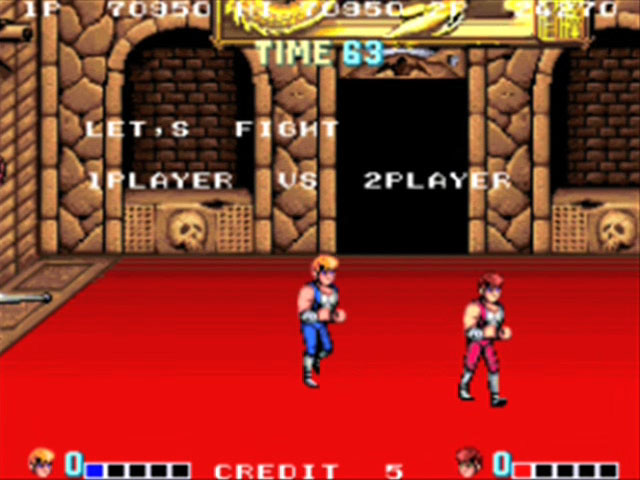
Nah, we’re good.
1. The cliffhanger (just F*** you)
How can we end the list with anything else?
Conduit 2 for the Wii is one of the rare decent shooters for that console and it ended with one of the most bizarre sequences in a game ever. In the finale, though you manage to fight off the villain, you are unsuccessful at stopping a new alien army that begins its assault on earth. Everything looks bleak until a portal suddenly appears nearby and in walk super soldier versions of Abraham Lincoln and George Washington who announce they’re there to help. Then, smash cut to credits. No follow up, no explanation, that’s all you get until presumably a sequel that never materialized.

We liked where this was going.
This is a notorious problem for long-winded franchises like Gears of War that frequently conclude its games highlighting new enemies were on their way or the Shenmue series that launched with lofty plans unroll its prosaic narrative at a glacier pace over dozens and dozens of sequels only to barely survive development hell long enough to give us three games.
Most notably though would be entries from our favorite franchises ever. Halo 2 today is still widely cited as one of the worst conclusions to a video game as the game spent much of its run time setting up sandbox shooting on alien worlds or with alternate characters while gamers wanted Chief to save earth. In the final cutscene, Chief finally makes it back home and updates the ground forces he’s back to “finish the fight” as the game cuts to baclk. To this day, that ending makes our blood boil.

Tune in next week! Same Chief time! Same Chief channel!
More egregious though would be Half-Life 2: Episode 2. Silent protagonist Gordon Freeman and the resistance stop an invading alien force only to be cut down by a new omnipotent and telepathic enemy that literally drains the brains of long-time mentor Eli Vance before being chased off by Alyx’s pet robot, Dog. As you’re left mourning Eli’s death left to wonder what are the next steps, the screen fades to black. At least Halo 2 got a Halo 3. We’ve been waiting over a decade to know what’s next for perhaps our favorite game franchise ever. All we have is a blog post from a writer of the series to offer some sense of closure.
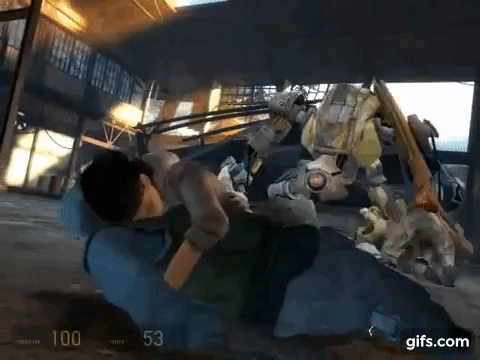
That seems like a good place to conclude the best game series ever.
Game development is a challenging proposal among managing development resources, project expectations, maintaining finances, and hitting deadlines. To count on a sequel to conclude the story of your game is arrogant and unfortunate as it happens to many really great games. We hope designers avoid this trend in the future and, if Valve ever does decide to grace us with the presence of anything Half-Life related, they conclude that story with an actual ending and not s set up to something that will likely never be.
